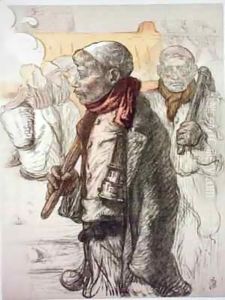Jules Gustave Besson Paintings
Jules Gustave Besson was a French painter and illustrator, born in 1821 in Grenoble, France, and he passed away in 1890. Besson's work is not widely known today and he remains a relatively obscure figure in the art world. However, during his lifetime, he was recognized for his contributions to French art, especially in the genres of landscape and genre painting.
Besson studied art in Paris, where he was influenced by the Romantic movement, which was prominent during the early part of the 19th century. He was also affected by the Barbizon school, a group of artists who focused on painting nature and rural life, advocating for plein air painting, or painting outdoors to capture the mood and lighting of the landscape directly from nature.
Throughout his career, Besson exhibited his work at the Paris Salon, the official art exhibition of the Académie des Beaux-Arts in Paris. The Salon was the most prestigious art event in France and being accepted to exhibit there was a significant achievement for any artist. Besson's paintings often depicted the French countryside, scenes of peasant life, and historical events, rendered with attention to detail and a naturalistic color palette.
Unfortunately, Besson's work did not achieve lasting fame, and many of his paintings have not survived or are housed in private collections, making them inaccessible to the general public. His contributions to French art during the 19th century were overshadowed by his more famous contemporaries, and as a result, he did not leave a significant mark on the history of art.
Despite this, Besson's career is a testament to the rich tapestry of artists contributing to French culture during a period of great change and artistic development. His life and work are reflective of the many artists who, though not remembered by the masses, played a role in the artistic dialogues of their time.
